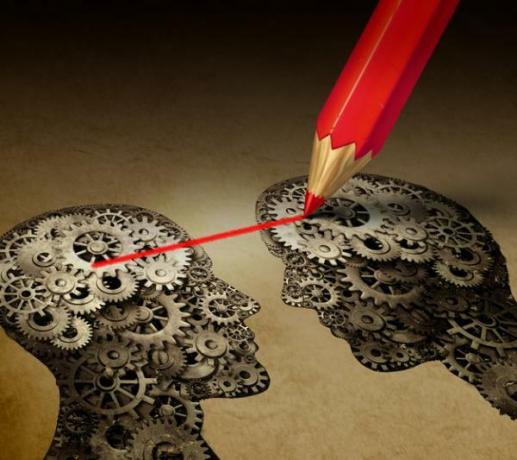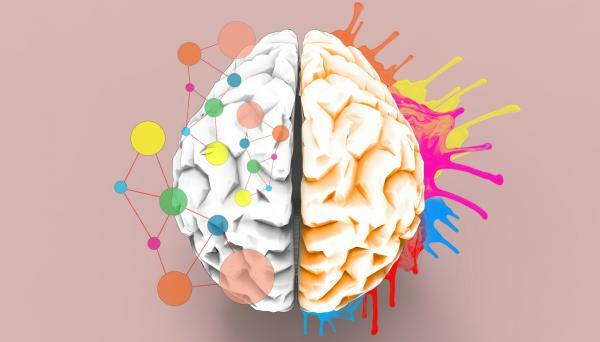
David Paul Ausubel, creator of the theory of meaningful learning, was a leading psychologist and pedagogue in the psychology of education and constructivism. Thanks to his theory, we realize that meaningful learning is not something as simple as we usually think. It is not just about acquiring knowledge through study or experience, it goes further. It is not a dichotomous question (all or nothing, we learn or we do not learn), but rather the degree of significance with which we learn, which depends on the quality and quantity of the links that we establish between previous knowledge and what we are learning. In other words, it is a continuum from highest to lowest significance.
If you dedicate yourself to teaching, you are a mother or father or you are simply interested in learning from childhood to adulthood, this article from Psychology-Online: Ausubel's theory of meaningful learning, gives you the opportunity to delve into meaningful learning.
Index
- Meaningful learning theory: summary
- What is meaningful learning
- Meaningful learning strategies
- Meaningful learning strategies: building cognitive structures
- Examples of meaningful learning
Meaningful learning theory: summary.
According to Ausubel's theory, The learning of people, regardless of their age, depends on his previous cognitive structure, which is linked to the new information. Being the cognitive structures the mental representations (set of ideas and concepts) that builds the person on a plot of reality, since it refers to a personal construction and, therefore, is not real.
Ausubel said that: "If I had to reduce all educational psychology to a single principle, I would state this: The most important factor influencing learning is what the student already knows. Find out this and teach him accordingly. "
For this reason, it is extremely important to know the cognitive structure of the students. It is not only about knowing the amount of information that the student knows, but what are the concepts and propositions that he dominates. This fact allows a better orientation of the educational task, leaving behind the concept of “blank minds, clean sweep or starting from scratch”, and taking into account that prior knowledge affects the learning of new concepts and, therefore, all of the above should be used to benefit the meaningful learning of students.
What is meaningful learning.
People learn in a meaningful way when a connecting link between prior knowledge and new information that we are learning, and once learned, it is retained in our cognitive structure, so that later it can be related to new information. Therefore, prior knowledge plays the role of anchor point with the new information.
Thus, teachers should ensure that students can establish relationships between what they already knew previously with what they should learn. It should be noted that it is common to modify previous knowledge as new information is learned. That is to say, when the previous knowledge is linked to the new, these can modify erroneous information of the former.
Meaningful learning strategies.
There are different types of learning strategies. Here we will focus on meaningful learning strategies, which must have these three fundamental conditions:
- The learning content material must be potentially meaningful from the point of view logical, referring to the inherent characteristics of the material to be learned and its nature. Namely, the content must be presented in an orderly, structured, cohesive way, among others.
- The learning content must be potentially psychologically significant, taking into account pre-existing knowledge of each and every one of the students in the classroom.
- Students must show a predisposition to learn significantly.
According to these conditions for meaningful learning marked by Ausubel, the role of the teacher is not taken into account, nor is the teacher's interaction with the students and their content. So, if we wanted to have his role in the acquisition of meaningful learning, We could say that it is the teacher who must present the content in an orderly, structured and cohesive. In addition, in order to enhance the link between knowledge, the teacher could, for example, propose an activity to know the knowledge of your students related to the new content and, from here, know how to organize the information to adapt it to the needs of each student. Finally, it might be beneficial if the teacher promote a positive classroom climate that encourages students to learn in a meaningful way.
Meaningful learning strategies: build cognitive structures.
How to build cognitive structures? The ideal way to explain how we build our cognitive structures is given by Piaget's equilibrium mechanism, which has assimilation as key concepts, accommodation, adaptation and balance. The learning process is what facilitates the construction of these structures and, therefore, gives rise to the Piagetian equilibrium mechanism of Piaget's learning theory.
We have cognitive structures at any age and in relation to any learning content, although these They may be poor, erroneous, or insufficient, but there is some point of connection between prior and new knowledge information.
With prior knowledge, we are faced with new content to learn. Before all this, there is a process of assimilation, where a link is created between the previous knowledge and the new content. But there are situations in which no union link is found, then, in this case, we would find ourselves in a cognitive imbalance, without obtaining significant learning. This produces discomfort and anxiety, therefore and, in order to reduce or eliminate these feelings, a accommodation process, which consists of starting to create new schemes, modify the previous ones, expand them, restructure them, eliminate them, and others. In other words, it is a restructuring of cognitive structures. On the other hand, if we find previous knowledge that fits with the new information, there will be learning significant, which will give rise, as Piaget mentioned, to a major rebalancing, that is, at a level higher.
It is necessary to emphasize that there is no accommodation without assimilation, since accommodation is a restructuring of assimilation and the balance between these is adaptation.
Piaget does not emphasize his theory in meaningful learning, according to him, it is about increasing knowledge. In this sense, there is only an increase in knowledge (meaningful learning) when the assimilation scheme presents an accommodation.
If you want to know more learning strategies, here you will find metacognitive skills and strategies in learning.

Examples of meaningful learning.
Next, we show situations that we can take as examples of meaningful learning, to better understand what this type of learning is, both in children and in adults.
Examples of meaningful learning in children
In a nursery class they begin to work the vegetables. In the prior knowledge From a child it appears that broccoli is a green vegetable, and he may mistakenly generalize this knowledge to all vegetables, thinking that they are all green. When the teacher explains that cauliflower is a vegetable, the student modify their schemes (accommodation) to add that the vegetables are not all green and include all the ones the teacher mentions.
On the other hand, if the student had known that there are many vegetables of different colors and one of them is white, round and with some green leaf, when the teacher describes cauliflower, the student will find a connecting link between previous and new knowledge, so that she will only modify the name of that vegetable of which she knew the characteristics but not the name, leading to significant learning.
Examples of meaningful learning in adults
In a driving school theory class they are talking about traffic signs. A cow danger sign appears on the blackboard, and automatically, a student's prior knowledge is linked to what she sees in that signal. Well, in the previous knowledge of it are, separately, the physical characteristics of a cow and, that a triangle in circulation means danger. Therefore, she learns in a significant way that this signal refers to the fact that she is in danger because she may run into cows on the road and therefore must watch her speed.
This article is merely informative, in Psychology-Online we do not have the power to make a diagnosis or recommend a treatment. We invite you to go to a psychologist to treat your particular case.
If you want to read more articles similar to Ausubel's theory of meaningful learning, we recommend that you enter our category of Cognitive psychology.
Bibliography
- Ausubel, D. (1983). Meaningful learning theory. CEIF Fascicles, 1, 1-10.
- Moreira, M.A., Caballero, M.C. and Rodríguez, M.L. (orgs.). (1997). TOProceedings of the International Meeting on Meaningful Learning. Burgos, Spain. pp. 19-44. Translation by Mª Luz Rodríguez Palmero.


